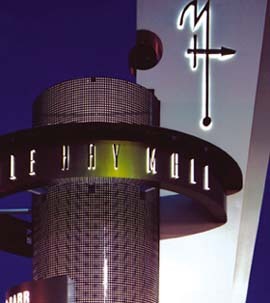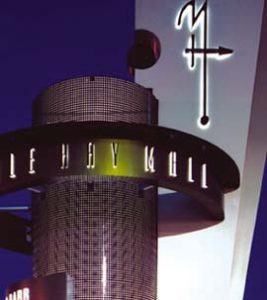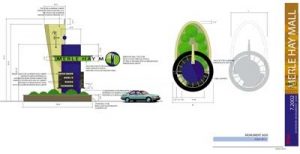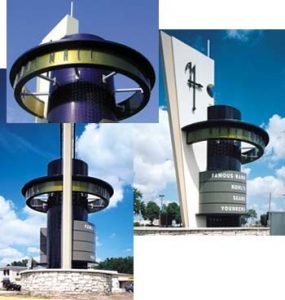Merle David Hay, a Glidden, IA-based farm boy, was the first Iowan, and one of the first three Americans, killed in World War I. Today, when Iowans say Merle Hay,” they’re usually referring to the road and shopping mall named after the state’s best-known war hero. An 8-ft.-tall cemetery monument and a 16-ton boulder at Merle Hay Rd. also honor him.
Des Moines-based Merle Hay Mall, Iowa’s largest, enclosed shopping center, spans 1.2 million sq. ft. and comprises four major department stores, 137 specialty stores, six movie theatres and 6,000 parking spaces. In addition, the mall boasts an updated, environmental-graphics system that includes an impressive, electric pylon sign. Due to its creative design and construction, the structure earned “First Place” and “Best of Show” honors in this year’s ST/ISA International Sign Contest.
We spoke with Keith Campbell, the project’s lead designer and vice president of Chicago-based RTKL Associates, an urban-design and architectural firm with offices located throughout North America, Europe and Asia.
Campbell noted that, although RTKL served as lead designer, it worked closely with ADCON (Ft. Collins, CO), the project’s sign fabricator, to create an effective and plausible, main-identification sign. Adcon’s Neal DeWitt served as the fabricator’s primary design consultant.
According to Campbell, approximately two years ago, RTKL contracted to design the mall’s entire environmental-graphics program, which included directories and wayfinding components. The pylon, the project’s final sign component, needed to be dramatic and noticeable to enhance the mall’s overall image.
He explained, “The mall’s fairly old, and its architecture hasn’t undergone a lot of construction. As a result, mall owners opted for a dramatic signage system that would give the mall a fresher and more appealing look.”
To bring the structure to life, the design team, which also included RTKL’s Omari Miller, expended several sheets of tracing paper as it explored different sign forms and site lines to ensure the sign’s visibility.
Along the way, designers scaled down the structure’s perforated-drum height approximately 6 ft. due to “cost reasons” and lack of need for additional height. According to Campbell, the sign didn’t need to be taller to be more spectacular.
An image change, however, was paramount. Campbell said, “We wanted the new signage to make people forget about the old signage. We really wanted to change the mall’s image.”
Consequently, RTKL implemented a complementary, but atypical color scheme — purple, olive green and pale green — to spice up the mall’s new image.
“The perforated drum’s rich-purple color,” Campbell noted, “makes an impression during the day and at night, when it’s illuminated. People don’t soon forget it.”
Visually impressive, the sign also required durability to withstand Des Moines’ extreme temperature ranges — a task that demanded collaboration between designer and fabricator. Primarily, the sign comprises aluminum, perforated steel panels and acrylic; LED lighting systems and mercury-vapor fixtures illuminate the structure.
Furthermore, the structure needed to match the mall’s existing landscaping elements. To complete the sign’s design, RTKL incorporated a rustic, field-stone, elliptical base.
Campbell concluded that visibility, legibility and recallability embody effective sign design. Consequently, he explained, RTKL carefully designed and placed the mall’s name, “MH” logo and anchor-tenant names, all of which required a prominent location.
A circular sign panel features the mall’s name; the sign’s vertical blade displays the shopping center’s unique logo, and tenant panels proclaim the complex’s major retailers — Famous Barr, Kohl’s, Sears and Younkers.
The Merle Hay Mall sign exemplifies effective sign design. Not only does it garner initial attention, it also leaves a lasting impression.


 Tip Sheet1 week ago
Tip Sheet1 week ago
 Ask Signs of the Times2 days ago
Ask Signs of the Times2 days ago
 Real Deal1 week ago
Real Deal1 week ago
 Benchmarks4 days ago
Benchmarks4 days ago
 Editor's Note2 weeks ago
Editor's Note2 weeks ago
 Women in Signs1 week ago
Women in Signs1 week ago
 Product Buying + Technology2 weeks ago
Product Buying + Technology2 weeks ago
 Photo Gallery6 days ago
Photo Gallery6 days ago

















